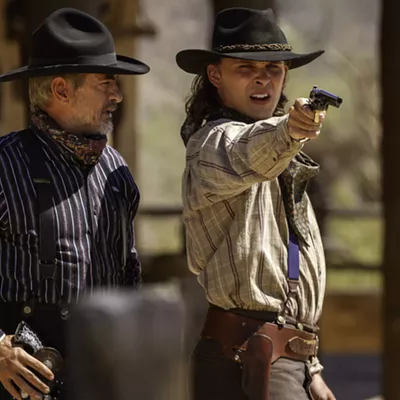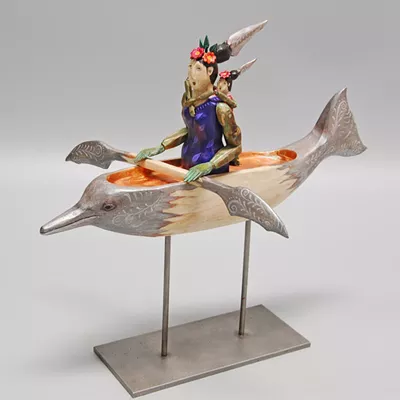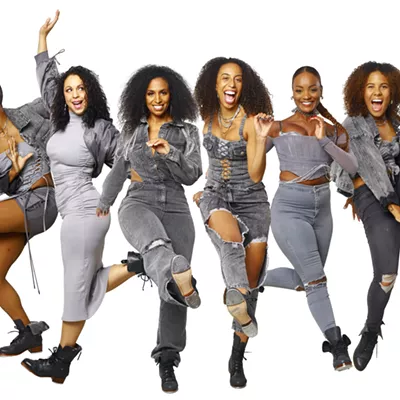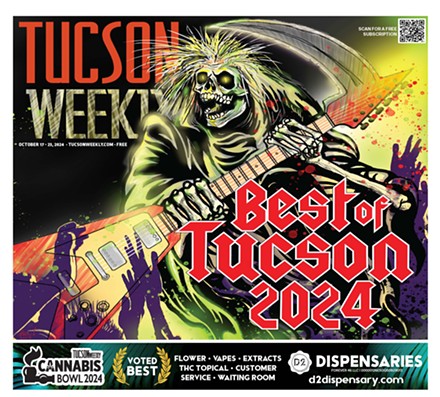At the same time European Jews were forced to wear two yellow triangles to form a star, LGBTQIA+ individuals were forced to wear one pink triangle. Both groups found themselves rounded up and sent to concentration camps during the Holocaust.
At downtown Tucson's Jewish History Museum, a new exhibit, "Invisibility + Resistance: Violence Against LGBTQIA+ People," explores the history of the LGBTQIA+ community both before and during the Holocaust, and the experiences and struggles the community faces today.
The exhibition features a pivot wall with explanations of the queer culture during the interwar period, such as the story of Magnus Hirschfeld, a German sexologist who studied human sexuality. His library collection at his Institute for Sexual Science was part of the knowledge lost in Berlin's famous book burnings.
The exhibition then moves to current events, most notably in a timeline that marks the murders of transgender people.
"The timeline really reinforces the fact that this is a living exhibit," said Nika Kaiser, the curatorial specialist and collections manager. "It changes throughout the year based on having to add new information as, unfortunately, trans people are continually murdered."
Since the exhibit opened in September, five new murders were added to the timeline.
In a space full of important symbols, a prominent one is the large pink triangle in the center of the exhibition. It's used intentionally "in support of efforts to appropriate the historically oppressive symbol, transforming it into a claimed visual symbol of queer identities," to the theorized "eight steps to geno cide" when he explained that the show's organizers decide to put the pink triangle front and center because it was a symbol, which is one of the elements of genocide. Davis said that the pink triangle "was used as a way to mark people for terrible persecution, incarceration and murder" but it has since been reclaimed by the gay community as a symbol "of community and pride."
Eli Burke, a local artist and educator, helped design the exhibition. To Burke, the triangle was important to use over the rainbow flag.
"In terms of the rainbow, I was trying to avoid using it because it's so used in the community," Burke said. "I wanted to make sure I was not focusing on the pride aspect of being queer, but what was happening in this exhibition, which was about violence."
Burke, who identifies as queer and trans, also wanted to lift up the LGBTQIA+ community in the exhibit.
"As I was working on this, the resistance aspect kept coming up," he said "How do we show this, how do we resist? And pride is one of those ways, and I wanted to lift up the community and lift up the people we are depicting in this space."
In terms of finding information for the exhibit, it was difficult because "it's an invisible genocide, it's not publicized," Kaiser said. "It's really hard to even find statistics about individuals who are being murdered."
However, with partnerships created through the community, the issue was told through personal stories instead of vast statistics.
In general, the exhibition moves beyond what happened during the Holocaust to a much broader issue, in terms of both time and culture. Burke hopes it will help connect underrepresented and marginalized groups.
"We're all sort of fighting for these same things, but independently from one another," Burke said. "What would be great is if we all come together to fight for each other."
By connecting the history to the present day, Burke said the issue is shown as an ongoing problem, rather than something new.
"This is not a document of the past, this is current, this is what's going on," Burke said. "It isn't something that happened past tense, this is something that happened, is happening, and is going to continue to happen."
Rocky Baier is a University of Arizona journalism student and Tucson Weekly intern.






